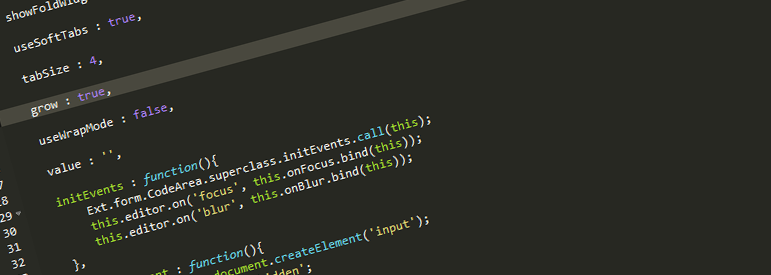The Ace Editor
I embedded the Ace editor into my team’s current project - Visual Interpreter, a JavaScript interpreter tool for visualizing in-memory model values and scopes as well as doing inline code evaluation. This is the third post about using Ace for this project. The other two blogs are:
The Ace Editor in an Angular Directive
We had originally designed our app so that we only needed one instance of the Ace editor on the main page. Since we were using Angular as our framework, I decided to put the editor in a directive in the main app module.
app.directive('aceEditor', function() {
return {
require: '?ngModel',
link:link
};
function link(scope, elem, attrs, ngModel) {
var editor = ace.edit('editor');
editor.setTheme("ace/theme/monokai");
editor.getSession().setMode("ace/mode/javascript");
editor.getSession().setTabSize(2);
scope.editor = editor;
};
});and then it was inserted into the html as such:
<div id='editor' ace-editor ng-model='codeText'></div>Embedding the Ace Editor in Multiple Angular Partials
As we started building up the app, we added partials and other instances of the Ace Editor in those partials. We noticed switching between partials without re-loading the page was breaking the editor. After a bit of investigation, it became clear that embedding the editor using the id ‘editor’ was not sufficient when the DOM updated.
I changed
var editor = ace.edit('editor');to
var editor = ace.edit(elem[0]);and then the editor would be able to update dynamically with the DOM element.
